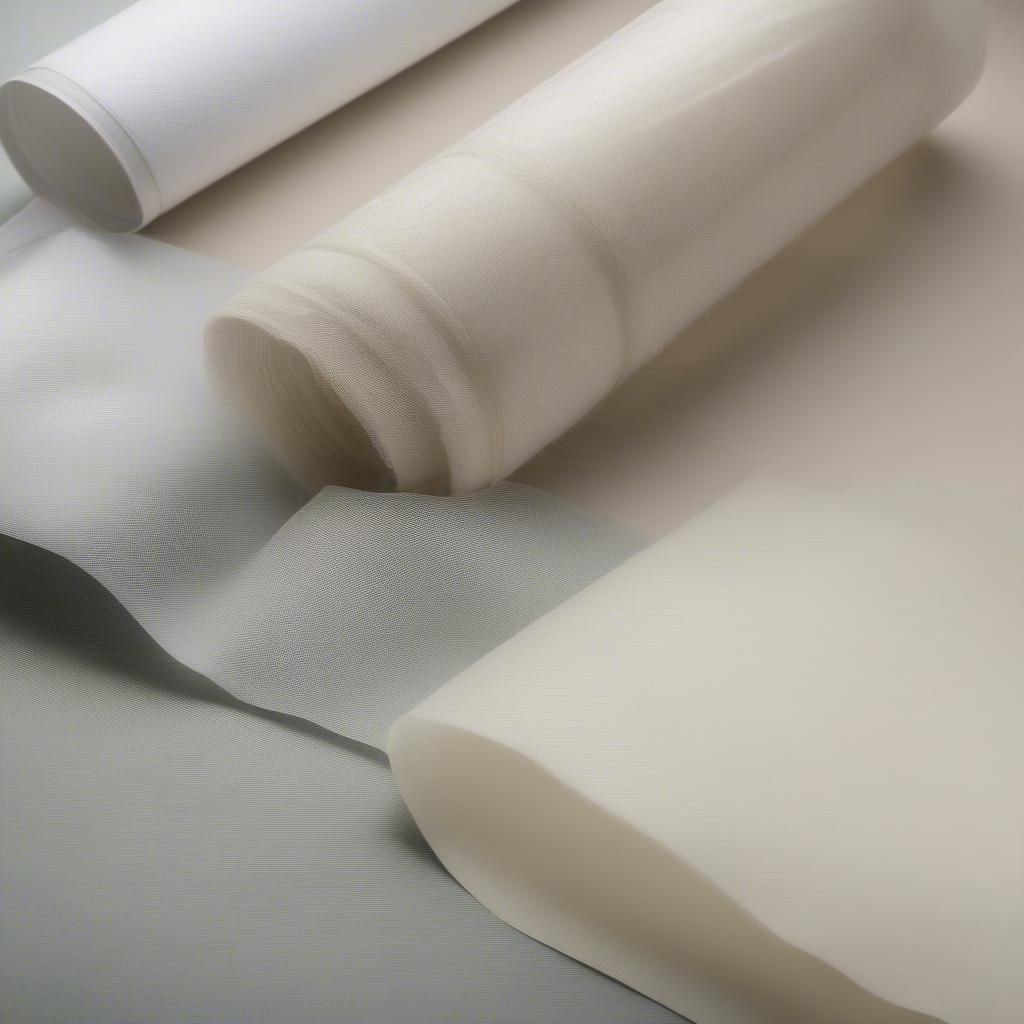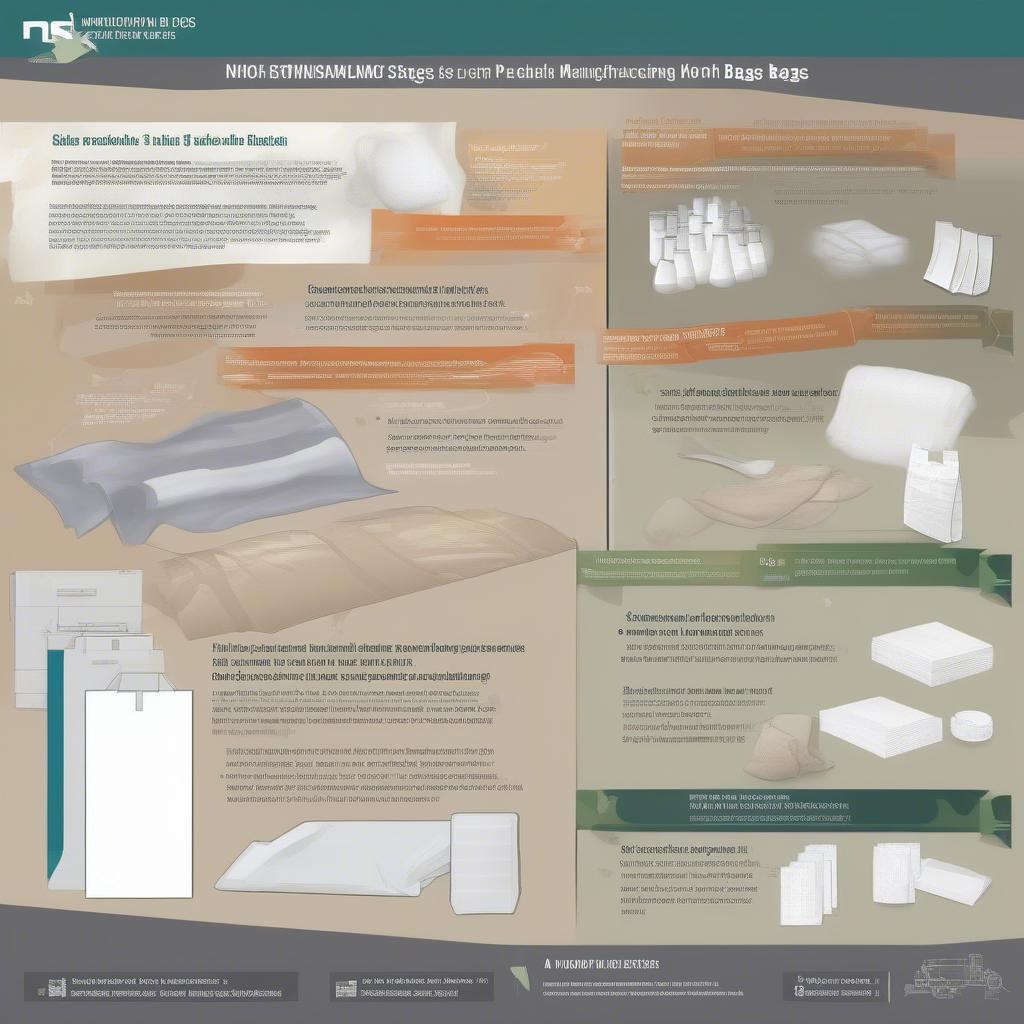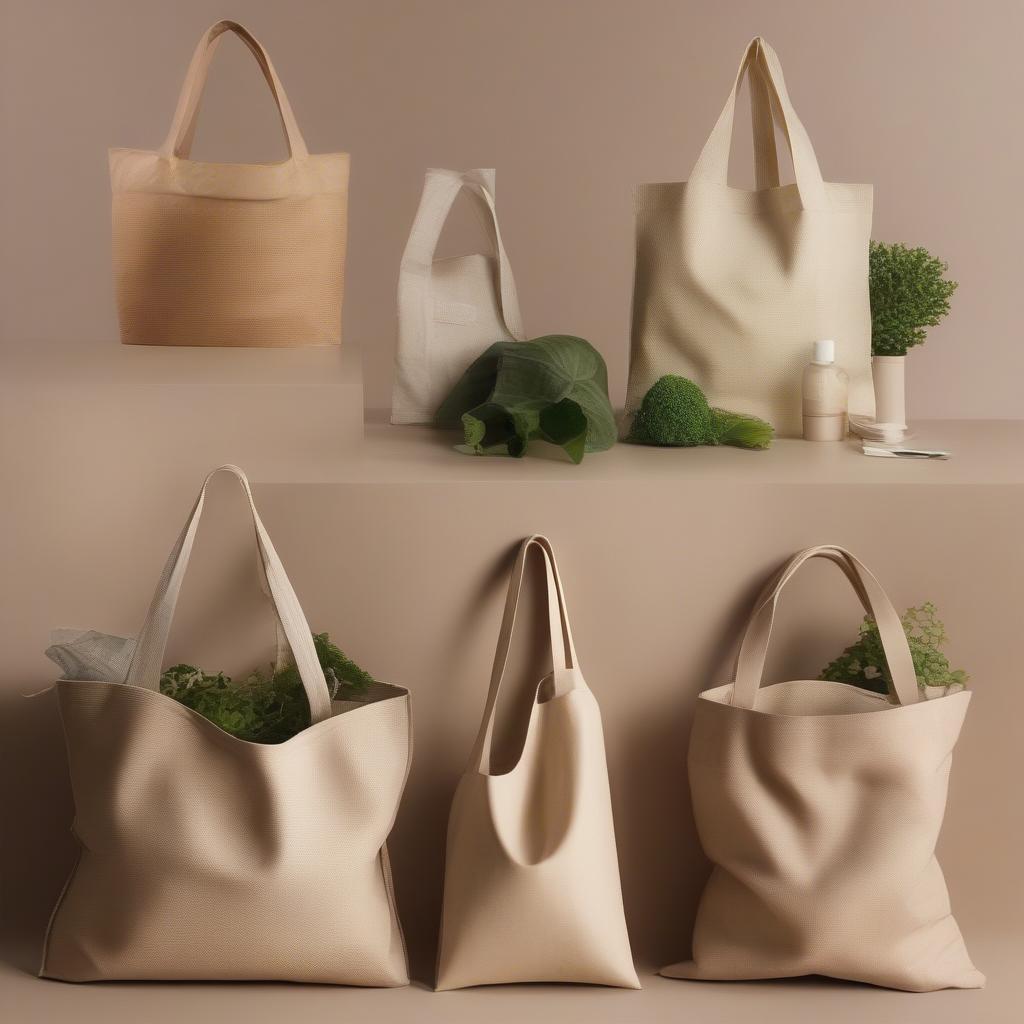Woven Bag
Exploring Non Woven Bag Raw Material: A Comprehensive Guide
Non Woven Bag Raw Material is a key component in the production of eco-friendly and versatile bags. Understanding the different types of non woven materials, their properties, and applications is crucial for both consumers and businesses. This guide delves into the world of non woven fabrics, exploring their advantages, manufacturing processes, and the impact they have on the environment.  Types of Non Woven Bag Raw Materials
Types of Non Woven Bag Raw Materials
Understanding Non Woven Fabrics
Non woven fabrics are engineered materials made from fibers bonded together through mechanical, thermal, or chemical processes. Unlike woven fabrics, which are created by interlacing yarns, non woven materials are formed directly from fibers. This gives them unique properties, making them suitable for a wide range of applications, including bag manufacturing. They are typically lighter, more porous, and less expensive than their woven counterparts. This makes them an attractive option for businesses seeking cost-effective packaging solutions.
What makes non woven fabrics so popular? Their versatility is a major factor. They can be easily customized in terms of thickness, texture, and color, allowing businesses to create bags that align with their branding. non woven tnt shopping bag factories often utilize these materials for their affordability and ease of printing.
Key Raw Materials Used in Non Woven Bags
Several different raw materials are commonly used in the production of non woven bags. Each material brings its own set of characteristics and benefits to the final product.
- Polypropylene (PP): This is the most widely used material due to its strength, durability, and water resistance. It’s also recyclable, making it a relatively eco-friendly choice.
- Polyester (PET): Known for its softness and drape, polyester is often used for bags requiring a higher-end feel. It’s also resistant to wrinkles and shrinking.
- Biodegradable options: As sustainability becomes increasingly important, biodegradable non woven materials like PLA (polylactic acid) and PHA (polyhydroxyalkanoate) are gaining popularity. These materials decompose naturally, reducing their environmental impact.
- Spunbond Polypropylene: This is a specific type of polypropylene non woven fabric known for its high tensile strength and tear resistance. It’s commonly used for reusable shopping bags.
What are the benefits of choosing polypropylene? Well, it offers a balance of strength, durability, and cost-effectiveness. It’s a workhorse material that can stand up to everyday use.
The Manufacturing Process of Non Woven Bags
The process of creating non woven bags involves several steps, from fiber preparation to bag fabrication. Understanding this process can provide insights into the qualities of the finished product.
- Fiber Preparation: The chosen raw material is converted into fibers.
- Web Formation: These fibers are then layered and arranged to form a web.
- Bonding: The web is bonded together using methods like thermal bonding, chemical bonding, or needlepunching.
 Non Woven Bag Manufacturing Process
Non Woven Bag Manufacturing Process - Bag Fabrication: The bonded fabric is cut and sewn into the desired bag shape and size.
non woven d cut bag manufacturer in rajkot specialize in creating various bag styles using these processes.
Environmental Impact of Non Woven Bags
While often touted as eco-friendly, the environmental impact of non woven bags depends heavily on the raw material used. Polypropylene, while recyclable, is derived from fossil fuels. Biodegradable options offer a more sustainable approach, but they can be more expensive.
“Choosing the right non woven bag raw material is a balance between performance, cost, and environmental responsibility,” says Dr. Anya Sharma, a materials scientist specializing in sustainable packaging. “Businesses need to consider the entire lifecycle of the bag, from production to disposal.”
woven polypropylene bags uk are a popular choice for businesses looking for durable and reusable bag options.
Choosing the Right Non Woven Bag Raw Material
The ideal non woven bag raw material depends on the specific application. Factors to consider include:
- Durability: How much weight will the bag need to carry?
- Water Resistance: Will the bag be exposed to moisture?
- Cost: What is the budget for the bags?
- Sustainability: How important is environmental impact?
u cut non woven bag manufacturer in surat can offer guidance on choosing the appropriate material for your specific needs. “Understanding the nuances of each material is essential to making informed decisions,” advises John Miller, a consultant in the packaging industry. “Don’t be afraid to ask questions and seek expert advice.”
laminated woven bags manufacturers provide an alternative option for those seeking added durability and protection.
Conclusion
Non woven bag raw material plays a pivotal role in the production of versatile and cost-effective bags. By understanding the properties and applications of different materials, businesses and consumers can make informed choices that align with their needs and environmental values. Choosing the right non woven bag raw material is a key step towards sustainable packaging solutions.  Sustainable Non Woven Bags
Sustainable Non Woven Bags
FAQ
- What is the most common non woven bag raw material? (Polypropylene)
- Are non woven bags recyclable? (It depends on the material)
- What are the advantages of using biodegradable non woven materials? (Reduced environmental impact)
- How are non woven fabrics made? (Fibers are bonded together without weaving)
- What factors should be considered when choosing a non woven bag material? (Durability, water resistance, cost, and sustainability)
If you need assistance, please contact our hotline: +84 388 951 999, our Hanoi address, or our San Francisco office at Tech Avenue, Suite 12, CA 94105. We offer 24/7 customer support.
